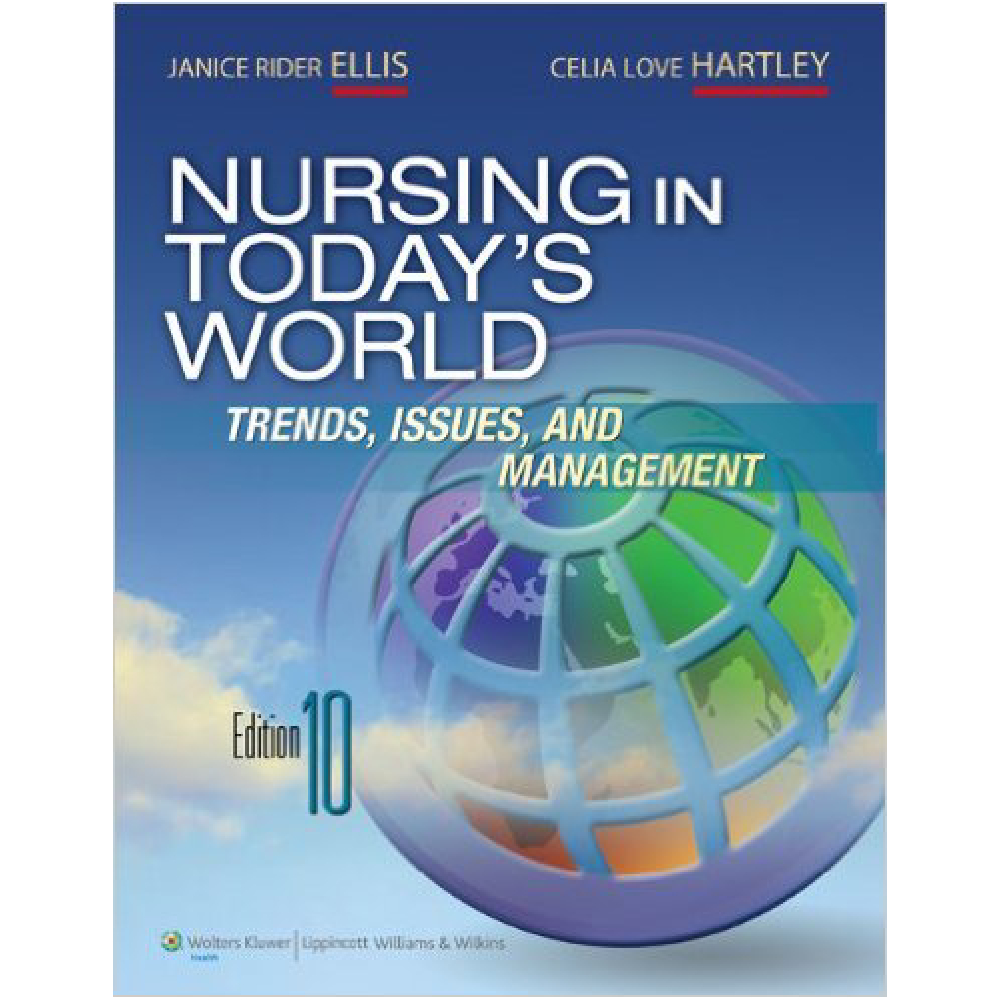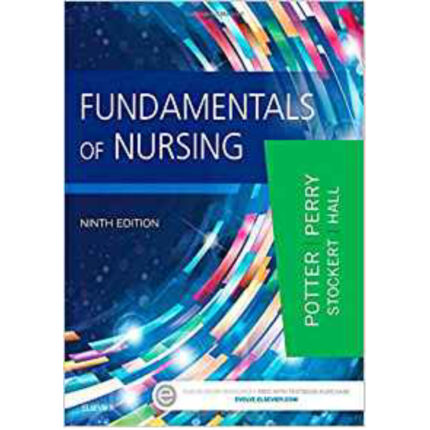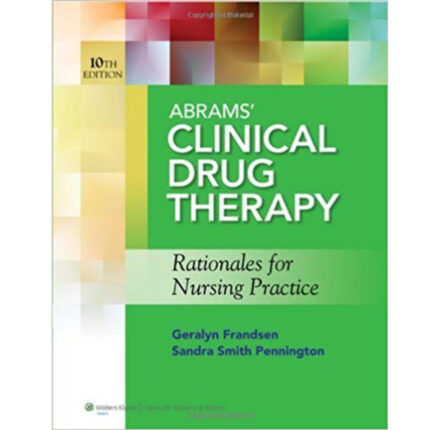Nursing in Today’s World 10th Edition by Dr. Janice Rider Ellis – Test Bank
Chapter: Chapter 11: The Nursing Profession and the Community
Multiple Choice
1. A goal of community nursing is to provide primary prevention from disease. Which of the
following nursing actions reflect this goal?
A) A nurse creates a pamphlet discussing heart-healthy foods and distributes it in the
neighborhood community center.
B) A nurse starts an intravenous line on a dehydrated baby who has been brought to the
emergency department.
C) A nurse performs range-of-motion exercises for a patient in traction.
D) A nurse repositions an elderly patient confined to a wheelchair to avoid the formation of
pressure ulcers.
Ans: A
Client Needs: B
Cognitive Level: Analysis
Difficulty: Moderate
Integrated Process: Nursing Process
Objective: 4
Page and Header: 400, Primary Prevention
Feedback: Primary prevention involves the efforts to prevent disease from ever occurring.
Primary prevention can be aimed at stopping the cause of disease. Generalized efforts to
educate people regarding healthy diets are aimed at this type of primary prevention. Tertiary
prevention focuses on preventing long-term disability and restoring functional capacity, as
exemplified by repositioning an immobile patient, rehydrating a patient, or assisting with
exercises.
2. A nurse decides to pursue a career in community-based nursing. Which of the following
statements represents the environment in which the nurse will be working?
A) Community-based nursing is limited to work in public clinics, schools, and industry.
B) The key to community-based settings is that the nurse is in charge.
C) The nurse serves as an educator, guide, and resource person and determines the action
taken by the client.
D) Care in the community is cost-effective.
Ans: D
Client Needs: A-1
Cognitive Level: Analysis
Difficulty: Moderate
Integrated Process: Nursing Process
Objective: 2
Page and Header: 398, Understanding Community-Based Nursing
Feedback: Care in the community is cost-effective and often more acceptable to the client
because it causes less disruption in life. It takes place in a wide variety of settings and involves
the nurse entering into a collaborative relationship with clients.
3. The movement of a client from acute care to a long-term nursing care facility involves
planning to provide continuity of care. What is the term for this type of planning?
A) Discharge planning
B) Comprehensive planning
C) Ongoing planning
D) Transition planning
Ans: D
Client Needs: A-1
Cognitive Level: Comprehension
Difficulty: Easy
Integrated Process: Nursing Process
Objective: 2
Page and Header: 405, Transition Planning
Feedback: Transitions are the movement of the patient from one care environment to another.
Transition planning refers to the planning process that takes place to assure that the patient’s
well-being is maintained throughout the time of transition. Organizing this transition from one
care setting to another is not termed discharge planning, comprehensive planning, or ongoing
planning.
4. A nurse is called into work to perform triage in the aftermath of an earthquake. Which of the
following are the expected responsibilities of this nurse?
A) Set up and monitor IV lines.
B) Prepare the emergency room for multiple victims.
C) Screen victims to prioritize treatment.
D) Check available blood products and assist with transfusions.
Ans: C
Client Needs: A-1
Cognitive Level: Application
Difficulty: Moderate
Integrated Process: Nursing Process
Objective: 7
Page and Header: 410, Institution and Agency Disaster Response
Feedback: Triage involves the initial screening of victims for the purpose of prioritizing
treatment and making the most effective and efficient use of both human and material resources.
The other noted tasks are within the scope of disaster nursing but are not triage activities.
5. A client asks a nurse for help in obtaining an alternative healthcare provider. Which of the
following is an accurate fact regarding alternative care that the nurse should share with this
client?
A) Most alternative healthcare practitioners do not have education-based credentials to practice
their medicine.
B) Alternative providers are not usually included in the federal HIPAA legislation that
mandates confidentiality in conventional healthcare settings.
C) The cost of alternative therapy is never covered by insurance carriers or healthcare plans.
D) It is easy to find accurate safety and efficacy data for alternative medicine on the Internet.
Ans: B
Client Needs: A-1
Cognitive Level: Application
Difficulty: Moderate
Integrated Process: Teaching/Learning; Teaching/learning
Objective: 9
Page and Header: 421, Investigate Service Delivery
Feedback: Alternative providers are not normally included in the federal Health Insurance
Portability and Accountability Act of 1996 legislation that mandates confidentiality in
conventional healthcare settings. Alternative practitioners do not necessarily lack credentials.
Accurate online information can be difficult to find and costs for treatment may be covered by
some insurance plans.
6. There is an increasing trend for nursing care to move from the hospital setting into the
community. Nurses who are to provide excellent care in a community setting should prioritize
which of the following?
A) Integrating culture and family into the planning and delivery of care
B) Becoming more assertive in client education and the planning of client care
C) Encouraging clients to limit their interactions with physicians
D) Teaching clients to replace biomedical interventions with complementary therapies
Ans: A
Client Needs: A-1
Cognitive Level: Analysis
Difficulty: Moderate
Integrated Process: Nursing Process
Objective: 1
Page and Header: 398, Understanding Community-Based Nursing
Feedback: The move to community care heightens the importance of family-centered,
culturally-competent nursing. Community nursing does not necessarily require that a nurse
become more assertive with client. It would be simplistic, and in most cases inappropriate, to
guide clients to replace biomedical interventions or avoid doctors.
7. In spite of the important role that hospitals play in American healthcare, there is growing
importance of community-based healthcare and community-based nursing. Which of the
following statements best conveys a central aspect of the philosophy of community care?
A) The client is in charge of his or her health and healthcare in the community.
B) Nurses maximize their scope of practice in noninstitutional settings.
C) Community settings allow for the greatest number and variety of treatment options.
D) The nurse becomes the key member of the healthcare team in a community setting.
Ans: A
Client Needs: A-1
Cognitive Level: Analysis
Difficulty: Moderate
Integrated Process: Nursing Process
Objective: 2
Page and Header: 398, Understanding Community-Based Nursing
Feedback: A central premise of community healthcare is the fact that patients/clients are in
charge. The move toward community care is not motivated by an increased role for nurses.
There are a greater number of treatment options in hospitals than in the community, but this fact
does not negate the importance of community care.
8. Mr. Hammond is a 70-year-old man with a diagnosis of type 1 diabetes who developed a
diabetic foot ulcer earlier this year. He has recently been discharged from the hospital and now
requires regular wound care. Karen is a community health nurse who provides wound care for
Mr. Hammond twice weekly. Which of Karen’s actions is most likely to empower Mr.
Hammond?
A) Encourage Mr. Hammond to acknowledge his contribution to the development of his
wound.
B) Provide information to Mr. Hammond that matches his expressed needs.
C) Encourage Mr. Hammond to involve members of his family in his care.
D) Delegate wound care to Mr. Hammond and reduce the frequency of her visits.
Ans: B
Client Needs: C
Cognitive Level: Application
Difficulty: Difficult
Integrated Process: Communication and Documentation
Objective: 3
Page and Header: 399, Client Empowerment
Feedback: Client empowerment is often fostered by assessing and meeting a client’s need for
information. Encouraging an acknowledgement of the client’s contribution to his or her current
health state is beneficial in many circumstances, but it less likely to make the client feel
empowered. Similarly, family involvement can be beneficial but does not directly foster
empowerment. Empowerment does not necessarily mean that the nurse does less and the client
performs his or her own care; delegation may not be appropriate.
9. An elderly female client who resides in the community tends to defer decisions regarding
her care to her eldest son. How should the community health nurse respond to the client’s
reluctance to make independent decisions?
A) Discuss this observation with the client and her son in an open manner and explore
alternatives.
B) Organize care so that it takes place at times when the son is not present in the home.
C) Accommodate this aspect of the client’s family dynamics when planning and carrying out
care.
D) Teach the client assertiveness skills that she can apply in her interactions with her son.
Ans: C
Client Needs: C
Cognitive Level: Application
Difficulty: Moderate
Integrated Process: Communication and Documentation
Objective: 3
Page and Header: 399, Client Empowerment
Feedback: The nurse should respect the client’s desire to organize her care in the way that she
prefers. It is not the responsibility of the nurse to reorganize or overcome this family’s
dynamics.
10. A client with a long-standing diagnosis of chronic obstructive pulmonary disease (COPD)
has been enrolled in a disease management program. Which of the following activities will be
prioritized in this program?
A) Providing comprehensive and evidence-based care of the client’s COPD
B) Creating collaborative relationships between the client and the care team
C) Ensuring that the client qualifies for Medicare and Medicaid
D) Liaising between the client and his health maintenance organization (HMO)
Ans: A
Client Needs: A-1
Cognitive Level: Analysis
Difficulty: Moderate
Integrated Process: Nursing Process
Objective: 5
Page and Header: 401, Disease Management
Feedback: Disease management focuses on providing the best evidence-based care for an
individual with a specific chronic illness. This does not necessitate enrollment in an HMO,
Medicare, or Medicaid. Collaborative relationships facilitate effective disease management but
this is a means to the end of positive health outcomes rather than an end in itself.













Reviews
There are no reviews yet.